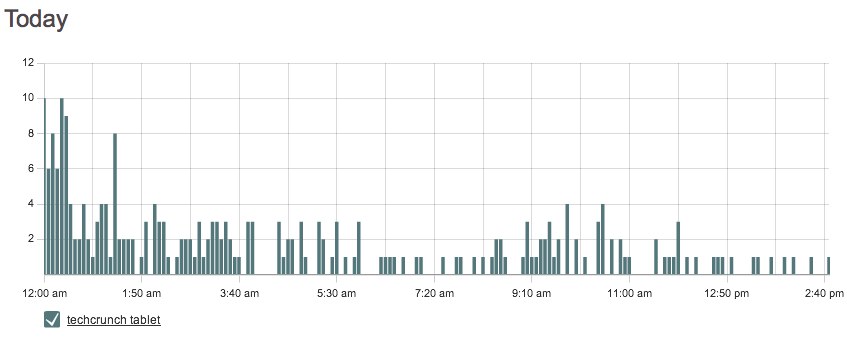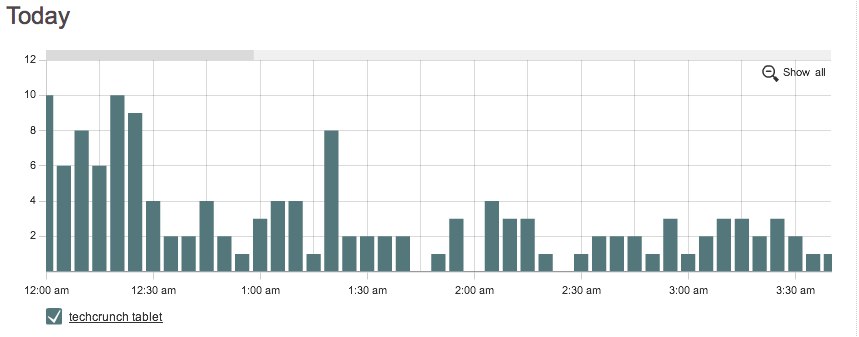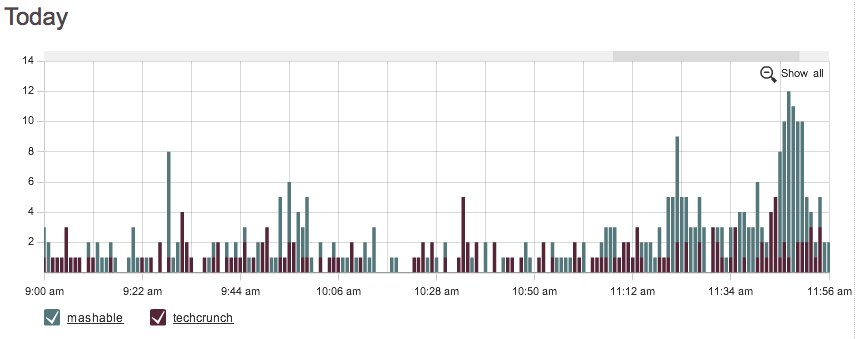Chartbeat Hacks: Track your competitors using Chartbeat
If you’ve had a chance to play around with Chartbeat, you’ll have found that it is more than the heartbeat of your site. Beyond the ability to see how many people are on your site in real-time and get event alerts, another great feature is the Twitter History tool on the Historical tab. This tool enables you to get a graphical sense of how much of an impact the search terms you set have had on twitter over the past day, week or month. You can see how the twittersphere responds when Techcrunch reviews your site or you launch a new product or service.
While, the most common terms that our users track are search terms around themselves, their products or their website, this tool becomes even more useful when you realize you can also use it to track competitors. For example, when news of the Techcrunch tablet leaked today, I began to track it using Chartbeat. This graph shows how the twittersphere responded to the news over the course of the morning:

From there you can zoom in on specific times of interest like that initial morning bump:

Another valuable way to use the Twitter History tool is to track and compare your site against your competitors. You can track up to five search terms and see your twitter impact compared to competitors. This graph snapshot shows tweets mentioning Mashable vs. tweets mentioning Techcrunch between 9am and 12pm today:

When you start to map this data over a week or month, you can start to get extremely useful feedback on just how effective your marketing is, benchmarked against your competitors. What’s more, you can watch the reaction in real-time as you manipulate your messaging. So, experiment with the Twitter History tool and if you come up with other creative ways to use it, we’d love to hear from you!